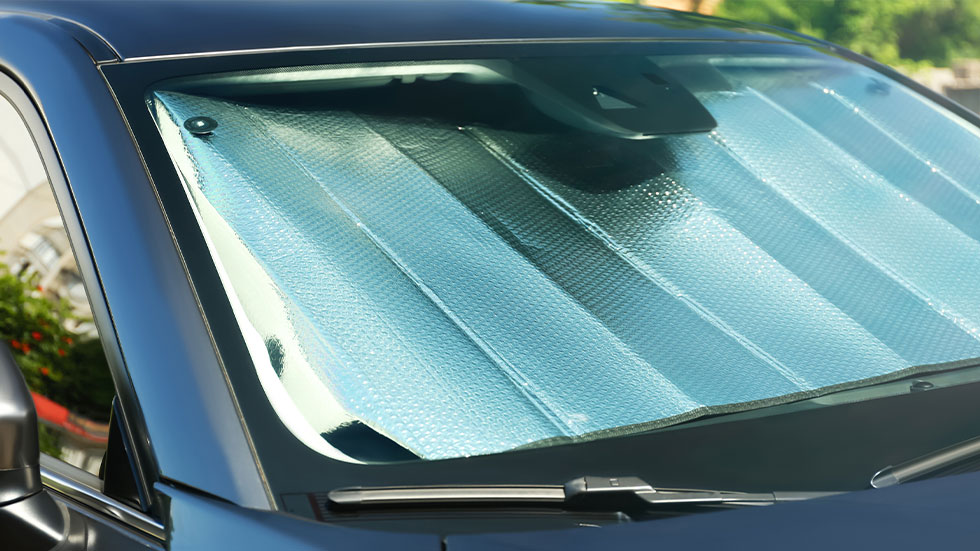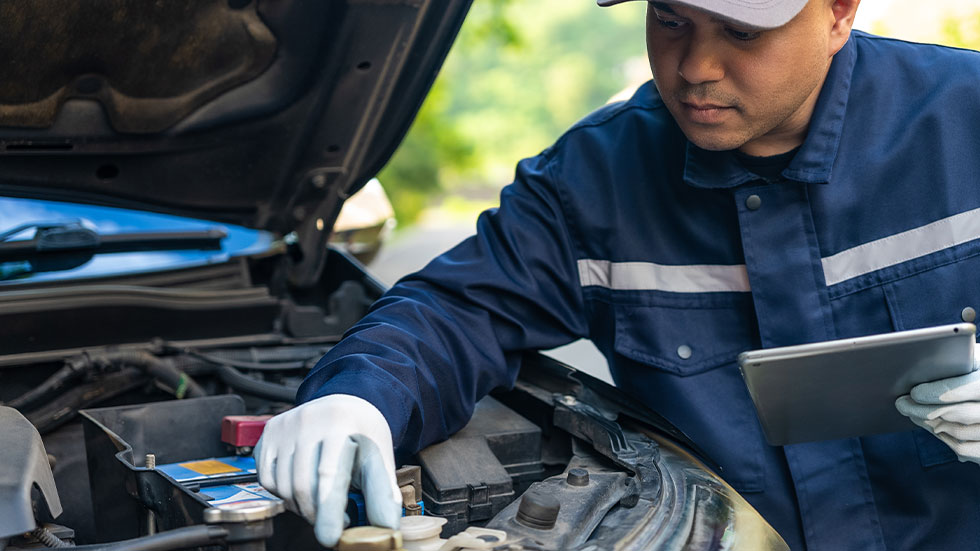Easy Steps to Protect Your Car from the Summer Sun
Here’s how extreme heat can damage your vehicle and what you can do to prevent it


After 90 minutes on a 75-degree day, the temperature in your vehicle can reach up to 120 degrees or higher. On an 80-degree day, it takes only about 40 minutes to reach that temperature. And, when your vehicle is left in direct sunlight, its interior surfaces can reach temperatures of nearly 200 degrees or more. Not only can this make the vehicle uncomfortable—and is some cases, downright dangerous—to drive in, but it can also cause serious damage to the interior and exterior of your car.

Here are just some of the damaging effects of the summer sun on your vehicle.
- The dashboard and steering wheel can become faded, split, or cracked.
- Leather seats can fade, dry, stiffen, and crack.
- Paintwork will fade and lose its color, especially darker paint colors. Also, parts like bumpers, fenders, mirror covers, and luggage racks will fade. Paint can eventually peel and fall off.
- Airbags can malfunction in extreme heat, leading to serious safety issues.
- Belts and hoses under the hood can break and detach.
- Tire pressure can be impacted, causing significant wear and tear to your tires.
WHY YOU SHOULD CARE ABOUT SUN DAMAGE TO YOUR CAR
There are two primary reasons you should be concerned about sun damage to your vehicle. The first is that damage to your vehicle can have a major impact on the value of your car and cost you repair dollars down the road. The second, and more important, concern is that this damage can actually compromise the safety of your vehicle. If your tires, airbags, or other internal parts of the vehicle are damaged from sun and heat, it can contribute to accidents, property damage, and even injury.
TIPS FOR PROTECTING YOUR CAR FROM SUN AND HEAT DAMAGE

Whether you live in a warm climate year-round or need protection only during the hotter months, take these precautions to protect your car from sun and heat damage.
Park in the shade or in a garage
The easiest form of protection from sunlight is to avoid it as much as possible.
Use a windshield sun protector, window shade, or car cover
These simple accessories can help keep your car cool and prevent damage by blocking the sun’s direct rays. They can easily unfold and slide into place on your dash or cover your windows. Or, if you can’t park in a garage, a full car cover can help protect both the interior and exterior of your vehicle.
Keep the interior clean
Dirt and dust can cause tiny scratches that can worsen over time, especially in direct sunlight. Wipe down the dash and interior regularly.
Visit the car wash
Over time, dust, dirt, and other debris can cause damage to the clear protectant coat of paint and, eventually, the paint itself. Extreme heat and sunlight can further fade and crack paint, but frequent washing can help remove the debris that causes scratches in the first place.
Protect leather seats with conditioner
Keep the seats clean, and apply a leather conditioner regularly to avoid cracks and tears.
Install seat covers
These can protect both leather and fabric seats from sun damage and also keep seat surfaces cooler for you and your passengers.
Apply a layer of wax
This can help protect the exterior from damaging debris and the sun’s rays.
Check your tire pressure
Sun and heat can cause tires to lose air pressure, which can lead to a blowout. Check the tire pressure often, and make sure the tires are properly inflated.

Additionally, have a professional mechanic at your local auto repair shop check out the following items on your vehicle.
Battery
High temperatures and use of your vehicle’s air conditioning can cause the battery to drain faster, so have a technician check the battery and charging system routinely to ensure their proper functioning.
Fluid levels
The risk of overheating greatly increases when fluid levels are low, so ensure that your motor oil, transmission fluid, power steering fluid, and brake fluid are kept at the recommended levels.
Cooling system
Make sure the belts and fluids are changed on routinely to protect your engine from overheating.
Air conditioning
If the interior of the vehicle isn’t cool, the refrigerant charge in the AC system may be low or misfunctioning. So, be sure to monitor the performance of the air conditioning system.
Simple precautions can help you avoid the damaging effects of summer heat and the sun’s rays on your vehicle so that you can protect your wallet and, more importantly, you and your passengers during your travels all season long.
